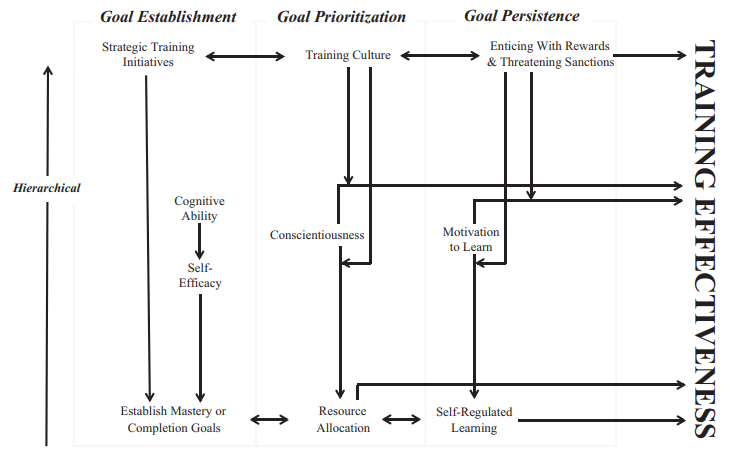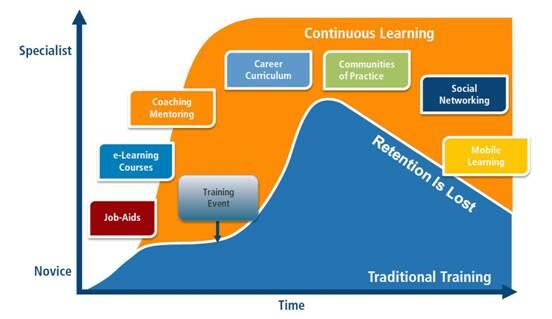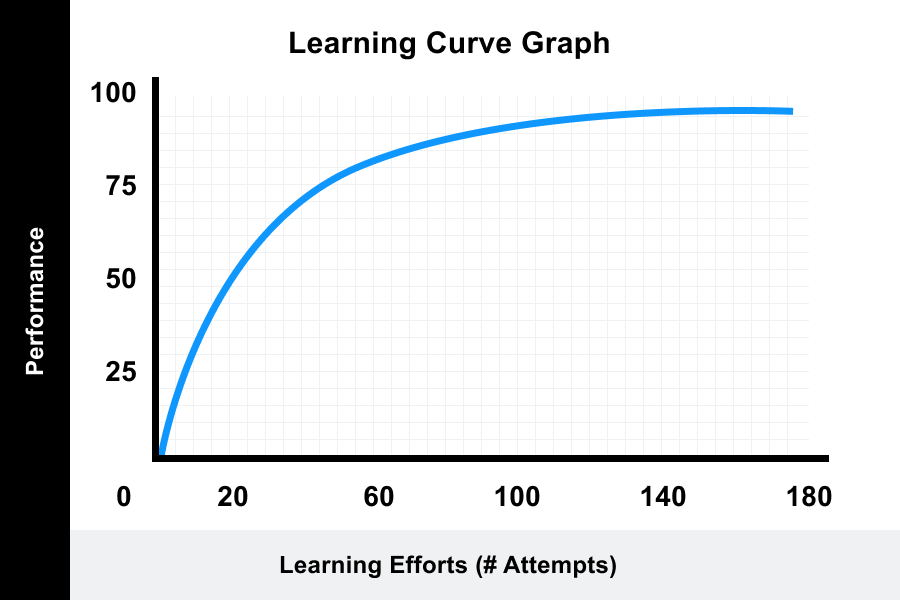Introduction
Any organizational changes in firms of various sizes require preparation and appropriate planning aimed at analyzing the progress and potential outcomes of interventions. In order to implement the necessary programs, leaders, as a rule, resort to relevant strategic decisions associated with the phased reorganization of specific areas of activity. In conditions of these changes, it is essential to not only use available resources and utilize proper innovations but also interact with the staff to prepare employees and achieve their understanding of the tasks set. In this regard, reorganization activities in companies should take place after special training courses and the assessment of subordinates’ readiness to work under a new strategy.
Preparation, in turn, influences organizational behavior and is one of the prerequisites for continued productivity. By using the example of the Google corporation and other firms, the characteristics and implications of training will be examined, including the significance of the changes and their impact on the success of the company. Both general and specific outcomes of interventions will be considered. Effective training procedures in organizations are the key to successful production outcomes and create a reliable background for productive activities.
Significance of Training
The modern business sphere is dynamic and actively developing, which are the conditions for organizations to introduce the necessary changes in their work process to withstand competition and make a profit. Globalization, as a trend of modern entrepreneurial activities, leads to the fact that companies aspiring to high positions have to create demanded offers for different market segments and implement different marketing strategies.
According to Al-Khaled, due to technological changes in the business industry, organizations should train their employees effectively “in order to prepare them to adjust and adapt, and also to achieve positive performance enhancements” (1). Therefore, the development and implementation of the necessary strategies for staff training is of high importance for companies’ production successes.
The advantages of implementing change programs involving preliminary staff training are as follows:
- An opportunity to convey all the necessary tasks to each employee.
- The creation of detailed programs aimed at the education of subordinates.
- The test implementation of an updated strategy for its faster subsequent implementation.
- The establishment contact among employees due to a constant exchange of experience and knowledge.
The value of such training is high both for company leaders who can ensure the reliable implementation of new strategies and employees who receive comprehensive data on the necessary obligations and goals and can cope with immediate responsibilities successfully. Knaak et al. note the importance of a cultural approach to the introduction of such projects and analyze the outcomes of projects by using the example of Canadian police organizations (32S).
According to the authors, in order for change projects not to be straightforward and too complicated, it is essential for team leaders to promote a cultural strategy to the use of new work regimes, thereby gaining subordinates’ authority and helping them to understand the required tasks better (Knaak et al. 32S). Polo et al., in turn, note that training at three levels – “individual, group and organizational” – is an additional driver of success (162). Thus, the importance of the necessary preparatory procedures is manifested for various stakeholders and carries numerous positive implications.
Strategic Process of Training
Setting goals that require adaptation to upcoming changes in an organization can take place in a strategic mode, which simplifies control and contributes to realizing all the tasks as efficiently as possible. Sitzmann and Weinhardt mention macro and micro levels of employee training and offer a special theory of engagement based on the separation of work stages and involving individual criteria (734). As these aspects, the authors cite strategic initiatives that correlate with relevant motivational drivers, for instance, a reward system, punishment sanctions, and other influences (Sitzmann and Weinhardt 735). According to the theory, training target plans include the following stages (see fig. 1):
- Establishment.
- Prioritization.
- Persistence.

This engagement mechanism works stably if managers approach the implementation of a training program responsibly and develop the necessary algorithm for interaction with subordinates, appointing responsible persons and taking part in monitoring the intermediate results. In addition to such an algorithm, individual training tools can be applied. Knaak et al. suggest paying attention to working with team leaders as a separate stage of preparation (34S).
By using police organizations as an example, the authors emphasize that comprehensive efforts to promote the necessary change strategies are to involve the interaction of managers with leaders and may include such aspects as “mental health education,” motivating imitativeness, and other procedures (Knaak et al. 34S). Depending on the profile of a company, these training courses usually vary, but a general emphasis on individual training is helpful. All these activities organized in a strategic sequence can help implement any change program successfully and quickly without the need to correct employees’ errors and suffer losses due to subordinates’ incompetent work.
Strategic Training: Google Example
As one of the organizations where periodic changes occur, which are aimed at optimizing performance and improving productivity, the Google corporation may be cited. The case statement of the company was amended in 2018 because the management decided to reorganize some of the working aspects and made a number of adjustments to internal policies, including recruiting principles and technological innovation (Google Mission and Vision Statement Analysis). Today, as its official missions, Google promotes the following initiatives:
- Access to services globally.
- Supporting knowledge sharing.
- Organizational Acceleration.
The vision statement of Google remains unchained and includes tow basic aspects:
- Fast access.
- Free access.
One of the main success factors of the corporation is a special mechanism of personnel training. As Schneider notes, Google’s management often engages outside resources to help subordinates adapt to specific working conditions and prove themselves better. Investing in continuing education courses opens up career prospects for employees, and for the heads of the company, this is a guarantee of high productivity and, consequently, stable income.
Gutierrez remarks that continuing education in Google is natural and gives a scheme that the corporation’s management promotes as an algorithm for staff training (see fig. 2). As a result, the organization’s employees do everything possible to realize their potential, thereby creating a profit for their company and increasing its credibility in the world market.

Based on the results of this company’s work, one can note that encouraging ongoing training has a positive effect on interventions and enables Google to maintain one of the highest positions in the field of information technology. Constant innovations, the policy of acquisitions, and other evidence of an active business position confirm that the management of this corporation does everything possible to create the conditions for subordinates’ training and stimulate their creativity. This, in turn, influences the ultimate goals and brings profit to the organization by forming its specific model of behavior in the market.
Relationships Between Training and Organization Behavior
In case employees receive the necessary qualifications at the stage of higher education and stop any learning activities in the process of further work, this affects professionalism negatively. Over time, a person forgets the acquired knowledge and skills and, in addition, is not ready to expand his or her attainments through the acquisition of new capabilities. As Yáñez-Araque et al. argue, “experience or performance in a learning task can influence and improve performance in a subsequent learning task” (1532).
In other words, professional development is the key to improving skills, which is often necessary in working conditions in a dynamic and rapidly changing business environment. In this regard, there is a direct correlation between the frequency and quality of employee training and organizational behavior that is observed in a particular company.
If the staff has a low level of professional training or cannot realize its potential as much as possible due to additional training, this impedes the implementation of valuable changes that may be needed. At the same time, one cannot argue that training is indispensable for success and market recognition. According to Yáñez-Araque et al., during the planning phase of reorganization procedures and from the beginning to the end of all interventions, “a chain of intermediate variables” should be taken into account to achieve high outcomes (1532).
Nevertheless, creating conditions for learning and gaining experience is the background for all further changes that managers plan as strategic development plans. Therefore, the promotion of training is an important aspect of success and productivity and, in many respects, determines the specifics of the organization’s behavior, including relations with other companies and potential consumers of goods or services.
When analyzing the need for training, one can resort to theoretical proof of the importance of training employees in the context of increasing overall work performance and achieving productive organizational behavior. For this purpose, a special learning curve concept may be applied to describe this correlation (see fig. 3). This graph shows a clear interaction between attempts that an employee makes in the process of work and productivity that grows with experience. Increasing the number of training procedures is directly proportional to higher productivity. This proves the need to implement a training strategy in case anticipated changes in the work process are significant since the probability of errors decreases, and the quality of the work performed, conversely, grows.

Google’s Training Methods for Implementing Changes
Promoting training in Google is a crucial measure since the dynamics of the company’s development are high, and constant updates in operating modes and the emergence of new opportunities require careful staff training. For this purpose, a special G2G program is implemented in the corporation, which stands for “Googler-to-Googler” (7 Things You Should Know). The essence of this technique and its goals are the following features:
- Employees share experience with one another, including those working in different fields.
- The right of every worker to train is unshakable.
- The possibility of training directly at the workplace, which reduces time and costs.
- Motivating subordinates to realize their professional potential and learn from one another contributes to productive teamwork.
This principle of training is a standard practice in Google and allows uniting employees while giving them an opportunity to help one another and participate in change projects together. According to the available information, in the corporation, about 80% of all preparatory procedures take place in the G2G mode (7 Things You Should Know).
As a result, when taking into account the size of the company and its sphere of influence, one can argue that this preparation mechanism is an effective methodology that helps all employees without exception to receive the necessary information about upcoming changes in a way that is understandable to them. In addition, organization behavior also changes for the better, and corporate policy is reinforced by this engagement practice. Thus, the exchange of information directly among employees has its positive results and may be promoted as a convenient training system.
For the company’s business, such a program carries only positive aspects. In addition to uniting the team, the management has a chance to create a special training environment within the corporation and not to attract additional external resources, thereby saving valuable assets. Due to the fact that there are many posts in Google, responsible employees can be involved in these useful activities. Corporate leaders cannot control the work of all the departments carefully, which is an additional incentive to build small groups in which the necessary knowledge and skills are acquired. This strategy is also acceptable in other organizations with a complex structure and diverse positions.
Training Leaders: Basic Features
One of the important strategic objectives in any company is the training of leaders with a focus on those specialists who can coordinate colleagues’ work. According to Beer et al., many HR specialists spend unnecessary resources on the implementation of complex assessment programs and support tools, while for productive organizational changes, it is necessary to create an effective training system (53). The authors also note that no training projects will contribute to qualitative changes unless the objectives and goals of the reorganization procedures are clearly explained to employees (Beer et al. 54).
In particular, leaders cannot control the work of the team and provide the necessary support if a company does not have a planned strategy in the context of the transition to a new regime. In order to train professional and highly qualified specialists who are able to help top management to move towards innovation and other growth ways, particular attention should be paid to the training mechanism of individual responsible persons. Such a measure can help eliminate misunderstanding and make the process of maintaining all the changes more sustainable and faster.
Conclusion
Productive changes in organizations can be implemented if appropriate training is used to create optimal conditions for the transition to an updated regime and provide comprehensive support to employees. The case of the Google corporation proves that encouraging the sharing of experiences among workers and promoting an environment for continuous learning contribute to significant growth and market recognition. The correlation between training and organization behavior is direct, and such a tool as a learning curve is evidence of this interaction. Leader training is a separate aspect of work that needs to be promoted in order to create a sustainable system for coordinating all the planned changes.
Works Cited
“7 Things You Should Know About Google’s G2G Training Method.” Vibons. Web.
Al-Khaled, Akram Abdulraqeb Sultan. “The Significance of Training in Organizations on the Performance and Capabilities of Employees.” Global Journal of Management and Business Research, vol. 19, no. 15, 2019, pp. 1-7.
Beer, Michael, et al. “Why Leadership Training Fails – And What to Do About It.” Harvard Business Review, vol. 94, no. 10, 2016, pp. 50-57.
“Google Mission and Vision Statement Analysis.” Mission Statement Academy. Web.
Gutierrez, Karla. “Continuous Learning in Google.” Shift. 2016. Web.
Knaak, Stephanie, et al. “Implementation, Uptake, and Culture change: Results of a Key Informant Study of a Workplace Mental Health Training Program in Police Organizations in Canada.” The Canadian Journal of Psychiatry, vol. 64, no. 1, 2019, pp. 30S-38S.
“Learning Curve Theory.” Valamis. Web.
Polo, Federica, et al. “Training Culture: A New Conceptualization to Capture Values and Meanings of Training in Organizations.” Journal of Workplace Learning, vol. 30, no. 3, 2018, pp. 162-173.
Schneider, Michael. “The 3 Simple Strategies Google Uses to Help Its Employees Learn.” Inc. 2017. Web.
Sitzmann, Traci, and Justin M. Weinhardt. “Training Engagement Theory: A Multilevel Perspective on the Effectiveness of Work-Related Training.” Journal of Management, vol. 44, no. 2, 2018, pp. 732-756.
Yáñez-Araque, Benito, et al. “From Training to Organizational Behavior: A Mediation Model Through Absorptive and Innovative Capacities.” Frontiers in Psychology, vol. 8, 2017, p. 1532.